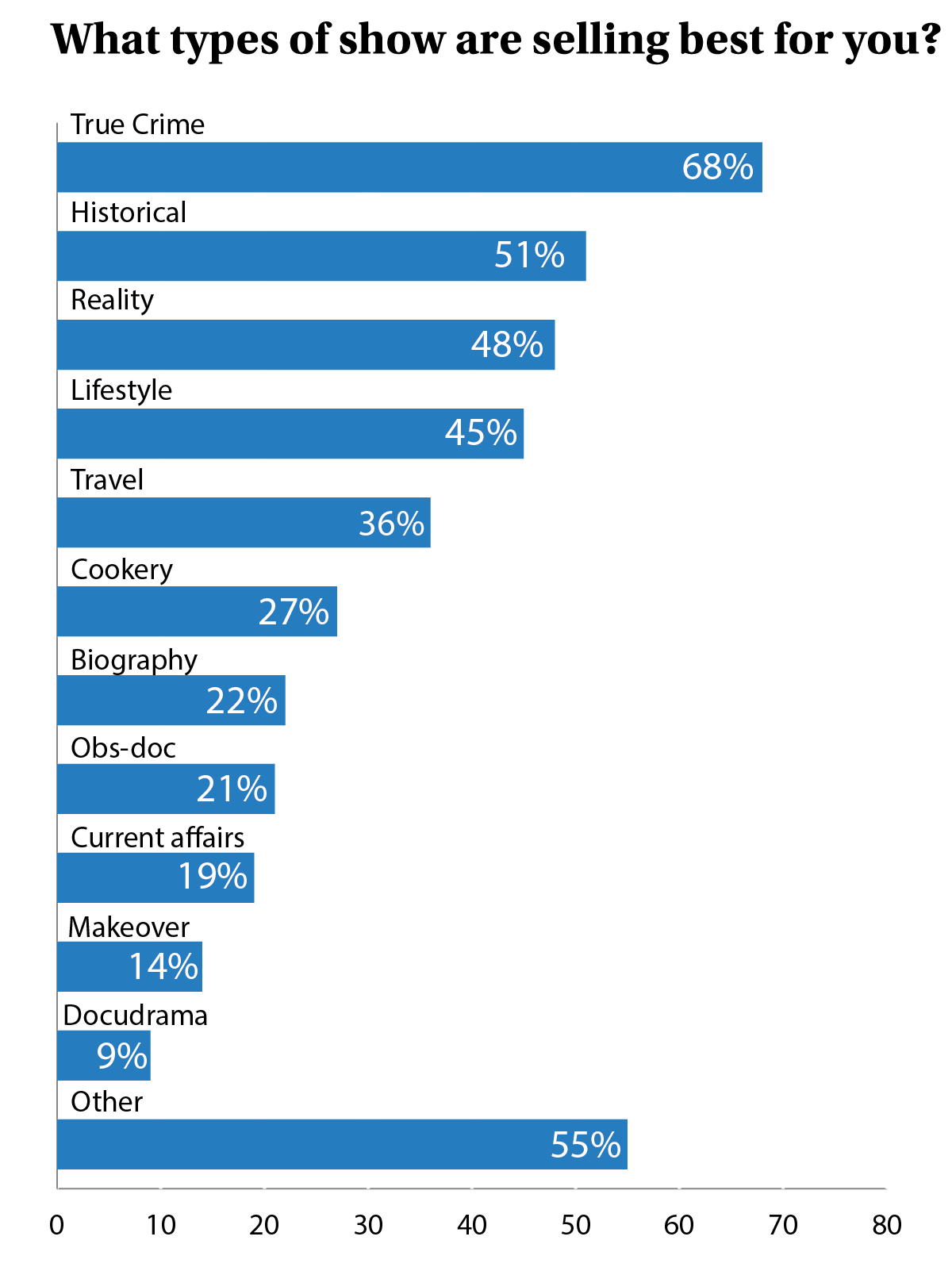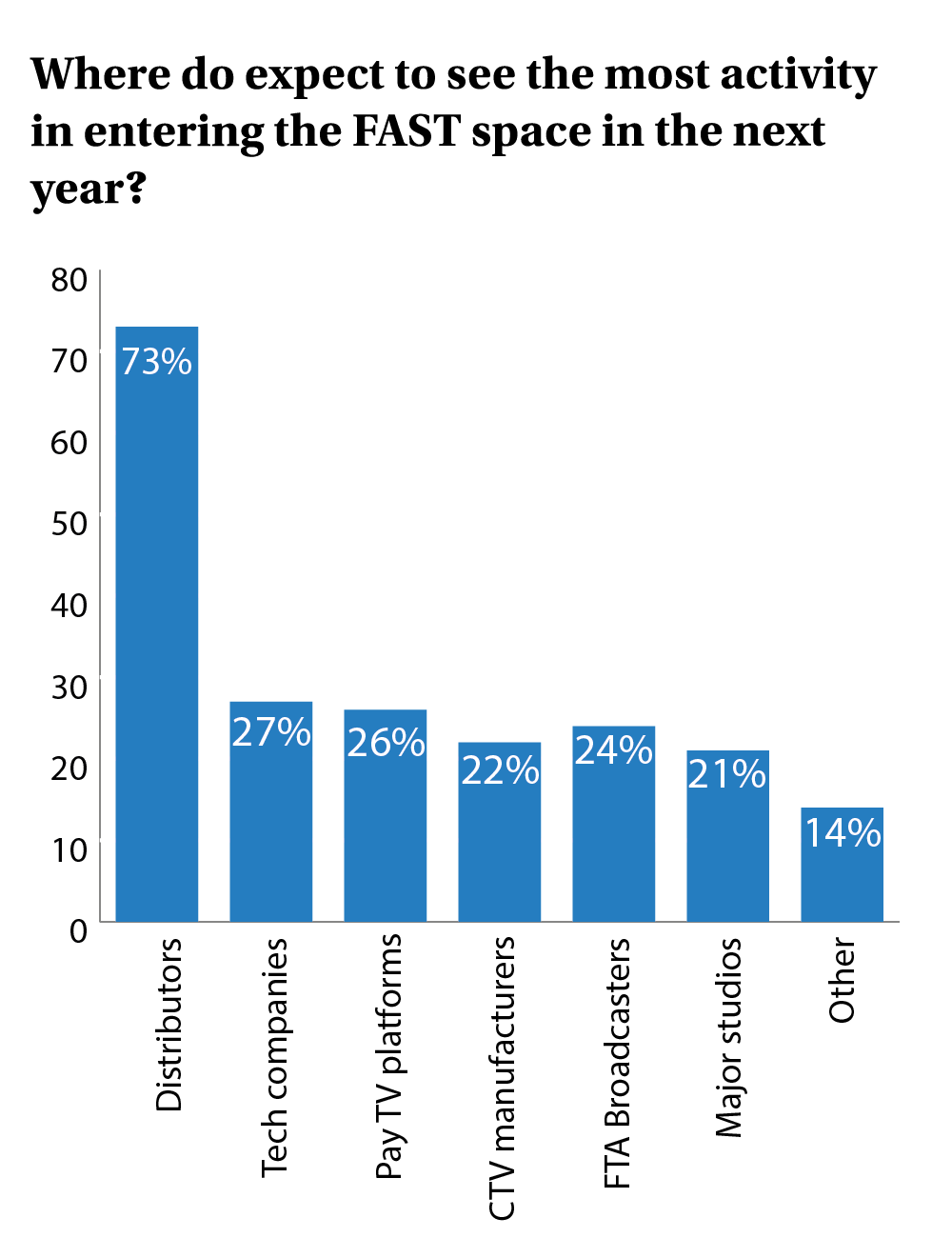Exclusive: TBI Distributor’s Survey 2023 – Part 2: Unscripted
From FAST growth to pre-financing shows and navigating a consolidated market, the 2023 survey reflects the ability of the distribution industry to adapt to change. With more than 40 responses from sales companies around the world, join us as we discover this year’s key trends.
It has been a year of transition for many in the TV industry. On the buyers’ side, it has been tough: US studios have been coming to terms with the realities of streaming; commercial networks have been adapting to a squeezed advertising market; and public broadcasters have been ducking and diving as they try to stretch budgets. For those on the other side of the transaction, consolidation and risk aversion are very real concerns, but growth areas such as FAST and the ever-increasing importance of distributors in financing are seen as offering considerable potential in a business that has always had to adapt quickly.
Unscripted: Switching lanes
Unscripted programming has enjoyed surging demand from buyers in many parts of the world since the pandemic, but while belt-tightening from streamers and networks is hitting production, distribution pain seems yet to hit.
Streamers looking to secure more bang for their buck have been turning to unscripted content for several years now and the insights from this year’s Survey suggest distributors have – at least until now – been reaping the results.
Annual revenues were up for 83% of respondents, with 22% claiming an increase year on year of between 0-9% and a further 36% putting the rise at between 10-19%. Beyond that, almost a quarter of companies taking part in the Survey said revenues were up by more than 20%, with 18% of respondents claiming to have booked profit rises over the same period of more than 20%.
It was not all good news on the profit front, with 4% reporting a decline of more than 20% and 5% citing a decline of between 0-9%, but for the majority of the industry there was growth to be had.
While 27% of companies reported static profits, 29% saw rises of 0-9% while 18% saw an uptick of between 10-19%. Put together, the figures mean 65% of distributors in the unscripted sector saw profit rises, reflecting streaming growth and more recent avenues emerging that favour unscripted product, FAST in particular. But more of that later.
Criminal thinking
True crime is again the stand-out genre for a sector that remains hooked on whodunnits, yet look more broadly and the interest being felt by distributors comes from myriad places.
While 68% of respondents said true crime was among their best-sellers (respondents could pick more than one genre), historical series (51%), reality shows (48%) and lifestyle programming (45%) were also in high demand.
Securing rights to those shows remains a major obstacle to growth, however. Just over 40% of respondents said the issue was among the greatest challenges they currently face but it was market consolidation that was the biggest worry, cited by 59% of respondents (who were able to pick more than one answer).
 Accordingly, more than 55% of distributors said they were financing unscripted series at an earlier stage than ever before, while 41% of respondents said that they are directly commissioning unscripted programming without a broadcaster or streamer attached.
Accordingly, more than 55% of distributors said they were financing unscripted series at an earlier stage than ever before, while 41% of respondents said that they are directly commissioning unscripted programming without a broadcaster or streamer attached.
Sarah Tong, director of sales at Hat Trick International, says that first-look deals are becoming increasingly prevalent, while Cineflix is among companies to have developed and pushed its ‘pre-sales to greenlight’ strategy.
Falling ad spot revenue and risk aversion were also key concerns, again reflecting similar fears in scripted and more broadly across the industry, as streamers and broadcasters alike look to cut back on spending as consumer spending retreats.
Yet for distribution, such a squeeze can always be turned into an opportunity with arguably more cost-efficient programming available from catalogues, but there is realism when it comes to how the outlook might pan out in 2024.
Koulla Anastasi, managing director at Woodcut International, points to the “financial and budgetary pressures” on broadcasters and streamers, but says “an improvement” is already being seen for the remainder of this year and into next, while Syndicado founder & president Greg Rubidge and Minna Dufton at Minnari Films highlight the potential effect of the US writers and actors strikes.“These are causing holes in schedules and increasing demand for ready-made programmes that are still waiting for the right platform,” adds Dufton.
The emergence of FAST (free ad-supported television) and AVOD is also being seen as an avenue for growth, with Orange Smarty CEO Karen Young and ITV Studios’ managing director of global partnerships, Ruth Berry, both pointing to the emergent platforms.
“We have the scale to pivot into new opportunities like FAST and digital,” adds Berry, “alongside the existing business with strong relationships that we can evolve in line with client needs.”
“The market is already changing significantly and will continue to change,” continues TVF International’s Poppy McAllister, “but whether or not it will improve is yet to be seen. The transition from pay TV to AVOD/FAST is one to watch.”
Getting FASTer
The opportunity presented by FASTchannels among those in the unscripted sector reflects a broader trend across the distribution business and almost three quarters of respondents say they expect buyers from this sector to increase.
Buyers from regional streamers are also expected to grow in number, with just over 40% of respondents expecting an uptick.
 However, increased demand is not widely expected to come from global streamers nor those working for local broadcasters on both the FTA and pay TV side, with less than a quarter of respondents (who were able to pick multiple categories) expecting buyers from these operators to increase.
However, increased demand is not widely expected to come from global streamers nor those working for local broadcasters on both the FTA and pay TV side, with less than a quarter of respondents (who were able to pick multiple categories) expecting buyers from these operators to increase.
Revenues from FAST remain in their early stages, however, with 68% of respondents reporting that revenue from the nascent tech accounts for around 10% of their total income, down from 73% in 2022.
A noteworthy 8% of respondents, however, said FAST accounted for between 10-25% of revenues, with a further 10% claiming it brings in between 25-50% of revenue.
Perhaps this is a sign of things to come, but it should be noted that some respondents operate largely in the FAST field, potentially distorting the true picture across the sector.
What is clear, however, is the direct role distributors expect to have on the FAST landscape, with the vast majority expecting this sector to be the dominant player in the year to come.
Another nascent tech, Artificial Intelligence, is also being explored but most respondents say usage is at an early stage.
One of the earliest applications being explored is in dubbing, says Bob McCourt, COO for commercial & international at Fremantle, and echoed by numerous others.
While Orange Smarty’s Karen Young sees AI as “an interesting development” that may be useful in “certain areas of the business”, she concludes that: “Ultimately, we are in a relationship business and there is no replacing human contact and experience to generate trust and loyalty.
“These kind of developments are tools that would be used alongside [current ways of working].”
As far as travel and markets are concerned, 77% expect to attend a similar number of events in 2024 as they did in 2019. MIPCOM is the must-attend, with almost all respondents considering it key.




